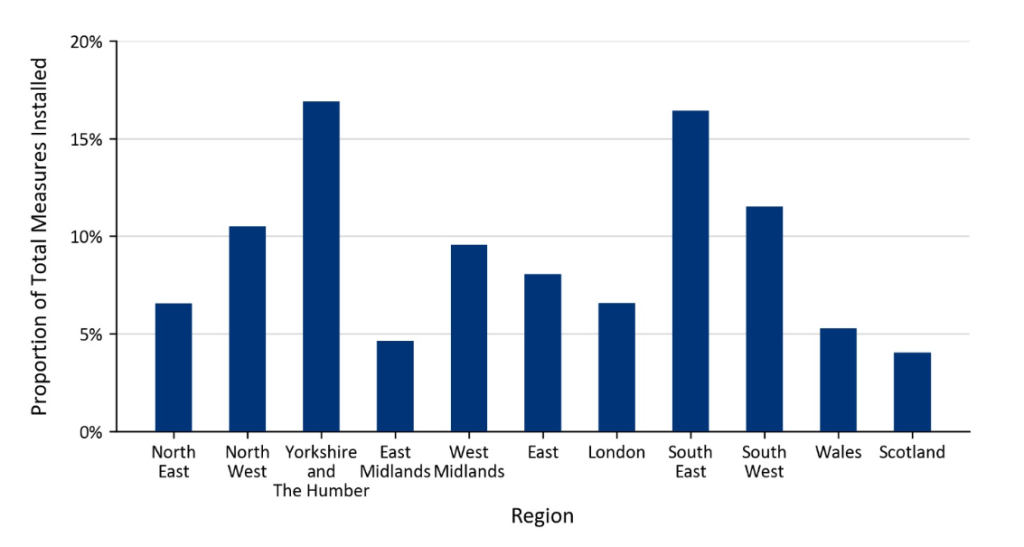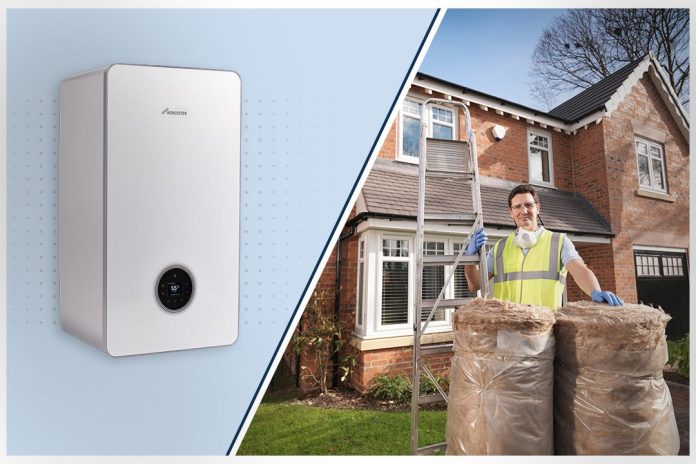The cost-of-living crisis and increasing energy prices have left millions of UK households in fuel poverty. It is estimated that 6.7 million homes were ‘in fuel poverty’ as of April 2022. The numbers have risen sharply, given the disruptions to global energy markets. The UK government launched the Great British Insulation Scheme, or GBIS, for short, to tackle this crisis.
This is a £1 billion scheme to help improve the energy efficiency of around 300,000 homes by March 2026. It is run by the energy regulator Ofgem. The scheme mainly targets the most inefficient homes. And it comes in addition to the wider Energy Company Obligation, ECO4 scheme.
Focusing on energy-efficient measures, GBIS plays a vital part in the pathway for Great Britain towards its Net Zero targets.
Why GBIS Matters: Goals and Aims for a Greener UK
The Great British Insulation Scheme was devised in response to the UK’s energy crisis. It has seen fuel poverty rise by over 50% in just six months. It was launched in March 2023. The scheme is designed to upgrade home insulation and support UK households by helping reduce energy bills.
But this scheme also aims for better energy efficiency, safeguarding homes from price shocks and making them warmer and safer. And supporting the UK’s journey toward achieving its Net Zero targets.
Following are some of the major goals of GBIS:
- This scheme will enable households to cut costs related to energy consumption in the longer term by improving insulation.
- It will make the UK more resistant to eventual changes in energy market prices.
- This scheme is about retrofitting the most inefficient homes in the country. It is important to reduce overall carbon emissions and meet net-zero goals.
Over 3,000 UK Homes Improved by GBIS by 2024
Since the scheme began in March 2023, household energy efficiency has greatly improved. By the end of December 2023, installers had added about 3,500 energy-saving measures to nearly 3,000 homes.
Although installations slowed down in December due to the holiday season, this was expected. More updates are expected in early 2024. The installers report new installations, showing the scheme’s ongoing progress.

Cavity Wall Insulation Leads as the Most Popular Energy Efficiency Measure
Cavity wall insulation has proved to be the most popular energy efficiency measure under GBIS. It makes up 61% of the total measures installed. However, this was followed by heating controls and loft insulation, which, in total, accounted for 30% of fittings.
These actions have played a major role in helping households reduce energy bills and improve living conditions. All this, aside from contributing to the wider UK environmental goals. Cavity wall insulation remains one of the central sources of energy efficiency. This reduces heat loss during winter and blocks heat gain during summer. Also, it enhances comfort while reducing energy costs.

Regional Impact of GBIS on UK Home Energy Efficiency
By the end of December 2023, about 3,500 energy efficiency measures were installed through the GBIS program. In Yorkshire and The Humber, 17% of these measures were installed. In the South East, 16% were installed. This shows that different areas are using the program at different speeds.
It is helping to improve energy efficiency in many homes, especially in places with high fuel poverty. Most homes have just one measure. Out of 2,979 homes, 2,691 had only a single installation.

Collaboration between GBIS and ECO4
GBIS is similar to the ECO4 scheme, but it focuses on single insulation measures instead of full home upgrades. ECO4 mainly helps low-income households and those in fuel poverty. In contrast, GBIS aims to help more general households that are not eligible for ECO4 but still struggle with energy costs.
GBIS and ECO4 work together to improve energy efficiency in as many UK homes as possible. This helps ensure that even the most vulnerable households can get energy-saving measures.
Willingness to Co-Fund: Insights from the GBIS Discrete Choice Experiment
A study for Net Zero found that government subsidies are key to encouraging homeowners to adopt retrofit measures. Higher subsidies increase the chances of adoption.
The survey showed that participants were more likely to install loft and cavity wall insulation if the government fully covered the costs. When homeowners had to co-fund, interest in installation dropped sharply.
The more expensive measures, like underfloor and room-in-roof insulation, have become most popular with much higher subsidies. In contrast, the less expensive measures, such as cavity wall and loft insulation, showed no greater additional benefit from a subsidy cap above £1,500.
Boiler Upgrade Scheme: Role in Energy Efficiency Improvement
The Boiler Upgrade Scheme encourages households across England and Wales to change their fossil fuel boilers for low-carbon heating. Starting 1 April 2022, it is part of the Heat and Buildings Strategy of the UK to replace traditional fossil fuel boilers.
It forms part of the £450 million scheme that will provide £7,500 to help eligible homeowners. Such a grant can be spent on the installation of air source, water source, or even ground source heat pumps. This also includes £5,000 for biomass boilers, such as systems that burn wood pellets.
The cost of heating solutions using low carbon is extremely high. Most house owners cannot afford to invest in them. The Boiler Upgrade Scheme (BUS) helps to reduce these costs. Eco-friendly upgrade options are almost reachable. It will run until 2028.
The Bottom Line
The GBIS has played a big role in improving energy efficiency across the UK. It targets the least efficient homes and offers fully or partly paid insulation measures. This helps lower energy costs, make homes more comfortable, and reduce carbon footprints.
The program is national, with the most installations in Yorkshire and The Humber. GBIS helps move UK households toward a more energy-efficient and sustainable future, supported by the government.



 Bitcoin
Bitcoin  Ethereum
Ethereum  XRP
XRP  Tether
Tether  Solana
Solana  USDC
USDC  Cardano
Cardano  Lido Staked Ether
Lido Staked Ether  TRON
TRON  Avalanche
Avalanche  Toncoin
Toncoin